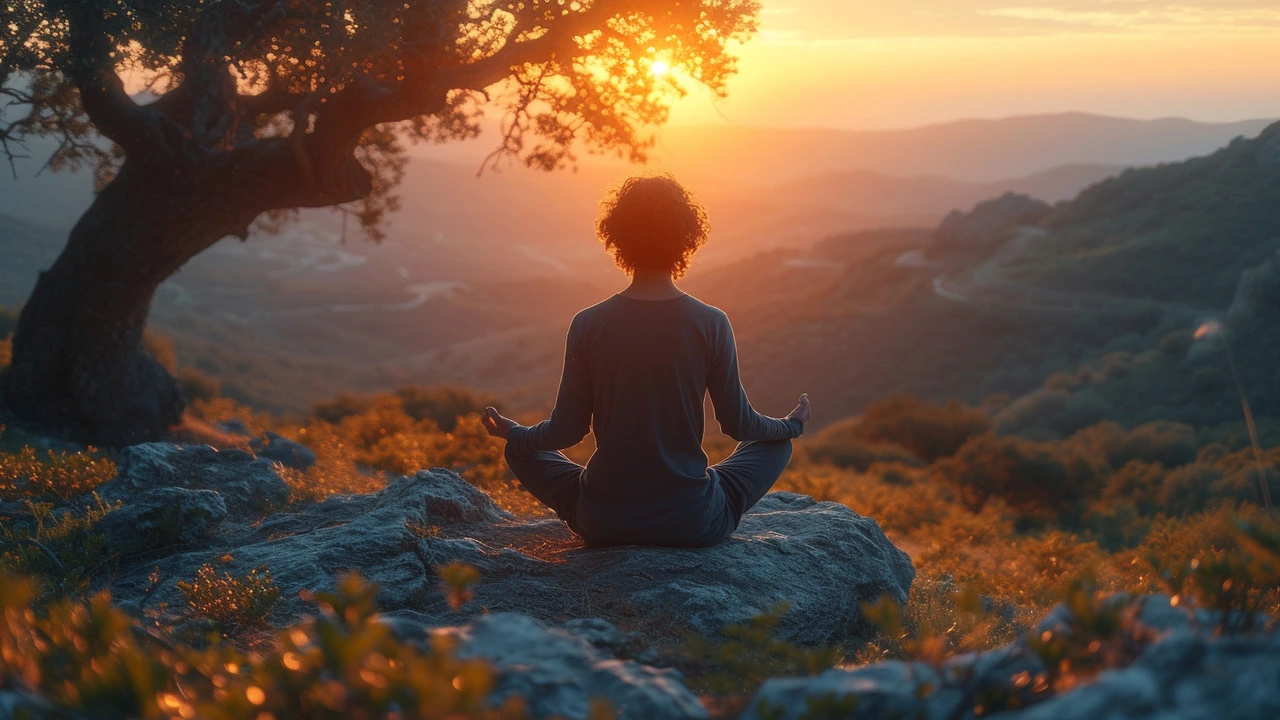
Understanding the Importance of Calm in Personal Development
The journey towards personal growth is often depicted as an upward, linear trajectory. However, anyone who has embarked on this path knows that it's more akin to navigating a labyrinth—filled with obstacles, challenges, and moments of self-doubt. Amidst the hustle and bustle of daily life, calmness serves as a beacon, guiding us through the chaos. It's the still point from which we can observe our thoughts, emotions, and actions with clarity and discernment.
Calmness is more than just the absence of stress; it's a state of balance and equilibrium. When we are calm, our mind functions at its best. We are able to think clearly, creatively, and critically. It's the soil from which the seeds of personal growth can sprout and flourish. By cultivating calm, we equip ourselves with the resilience needed to face life's challenges head-on. It's a tool that enables us to disconnect from the external noise and connect with our inner self. This connection is crucial because it lays the foundation for self-awareness—one of the cornerstone qualities necessary for personal development.
Strategies for Cultivating Calmness
Cultivating calm might seem like a daunting task, especially in a world that values productivity and constant activity. However, with intentionality and practice, it can become a natural state of being. Mindfulness practices, such as meditation and deep-breathing exercises, serve as powerful tools in achieving calm. By focusing on the present moment and acknowledging our thoughts and feelings without judgment, we can significantly lower our stress levels.
Another effective strategy is creating a calming environment. This can involve decluttering your physical space, incorporating elements of nature into your surroundings, or establishing a daily routine that includes quiet time for reflection and relaxation. Additionally, engaging in activities that bring you joy and fulfillment—be it reading, painting, or hiking—can also foster a sense of calm. These activities not only provide a break from the stressors of daily life but also allow you to reconnect with yourself on a deeper level.
The Relationship Between Calmness and Creativity
One of the most transformative aspects of calmness is its ability to unlock our creative potential. When we are in a state of calm, our mind is free from the clutter of anxiety and worry, making room for innovative thoughts and ideas. This isn't just anecdotal; numerous studies have shown that stress inhibits creativity while a calm mind fosters it. Thus, investing in calmness not only benefits our emotional health but also enhances our creative capacities.
Engaging in mindfulness practices can significantly contribute to this creative awakening. Techniques such as mindful walking or journaling can help in calming the mind and fostering a creative mindset. Moreover, allowing ourselves to be bored—a state we often try to avoid—can also spark creativity. In moments of boredom, our brain switches to a default mode network, which is associated with daydreaming and imagination. Embracing these moments of stillness can, therefore, be a powerful catalyst for creativity.
Overcoming Obstacles to Calmness
While the pursuit of calmness is undeniably beneficial, it's not without its challenges. External pressures, such as work deadlines, social obligations, and the constant barrage of notifications from our devices, can make it difficult to maintain a state of calm. Furthermore, internal factors like negative self-talk or a tendency to overthink can also disrupt our peace of mind.
Overcoming these obstacles requires a multifaceted approach. Setting boundaries, both digitally and socially, can help minimize external stressors. As for the internal challenges, practices like cognitive behavioral therapy (CBT) and positive affirmations can aid in reshaping negative thought patterns. It's important to remember that cultivating calmness is a journey, not a destination. It requires patience, perseverance, and self-compassion. Mistakes and setbacks are part of the process, but with each step, we move closer to a life marked by balance, peace, and personal growth.
